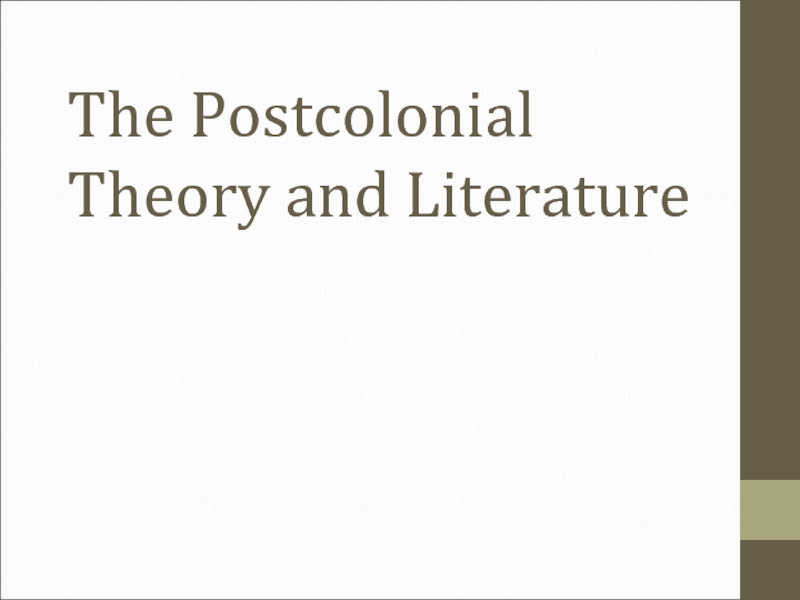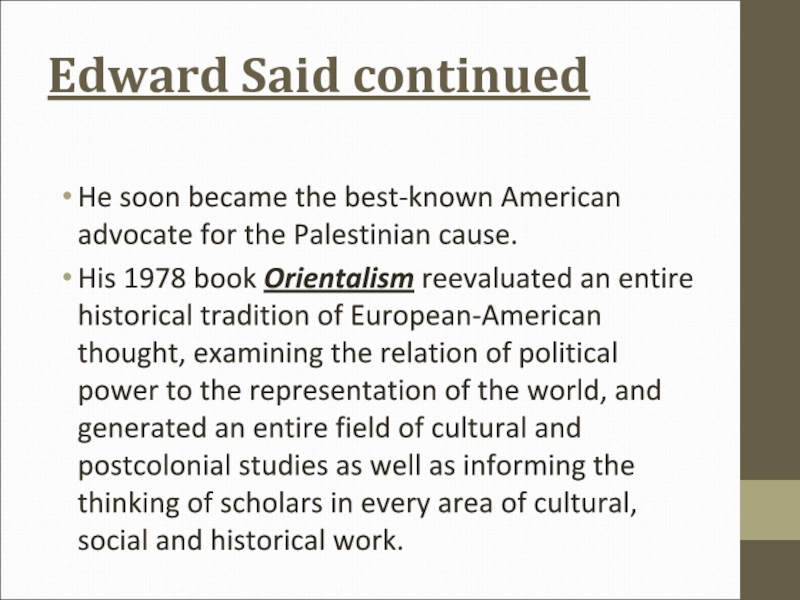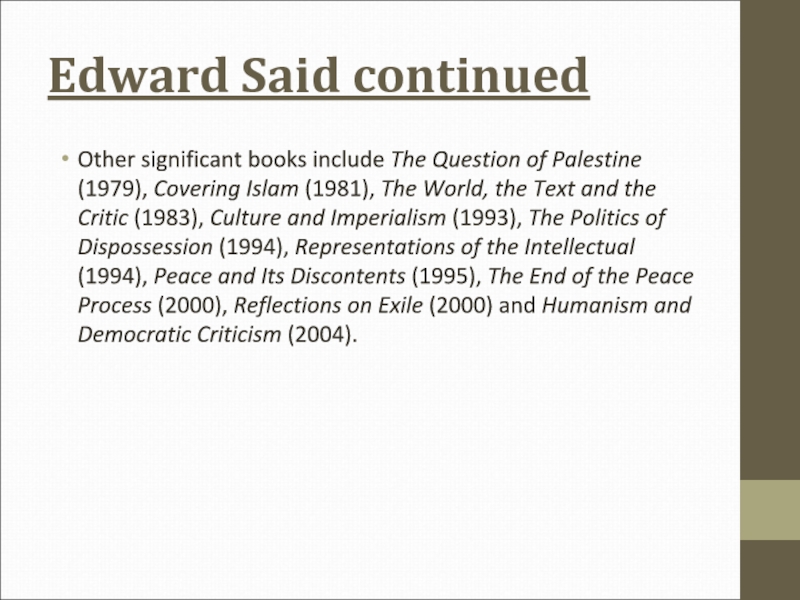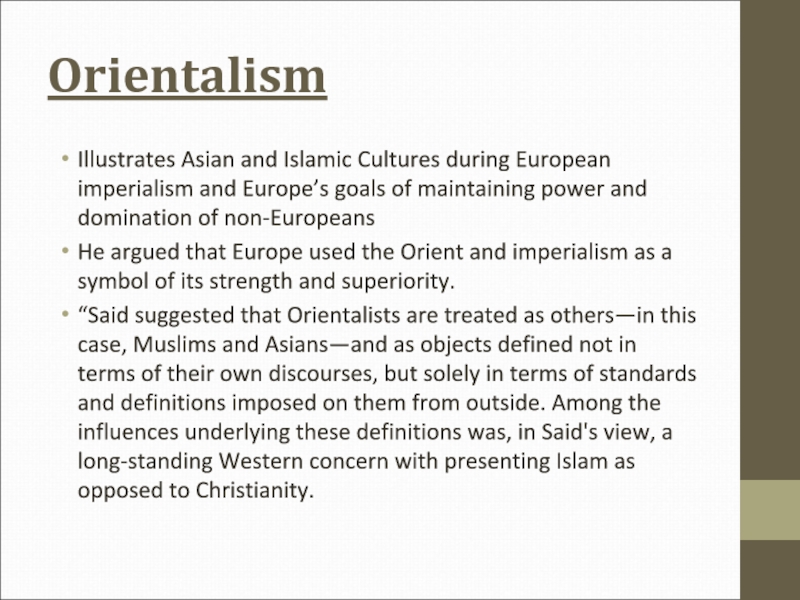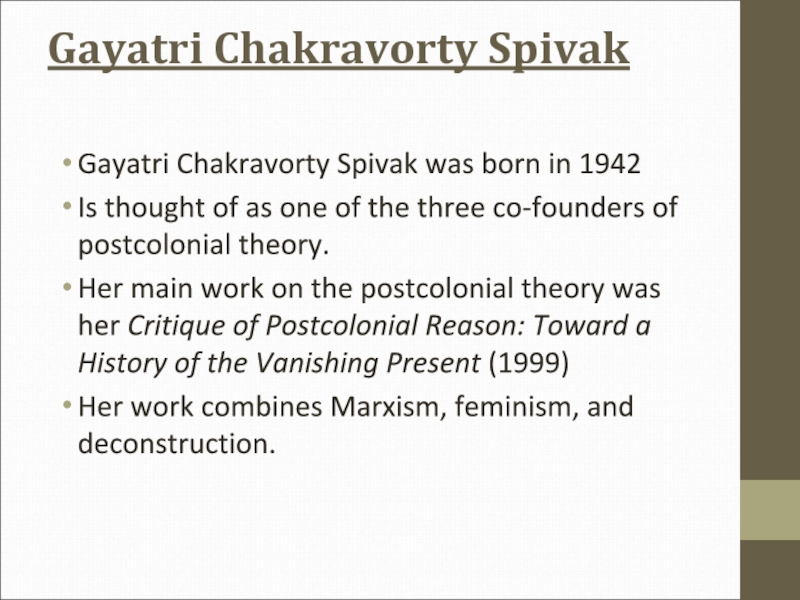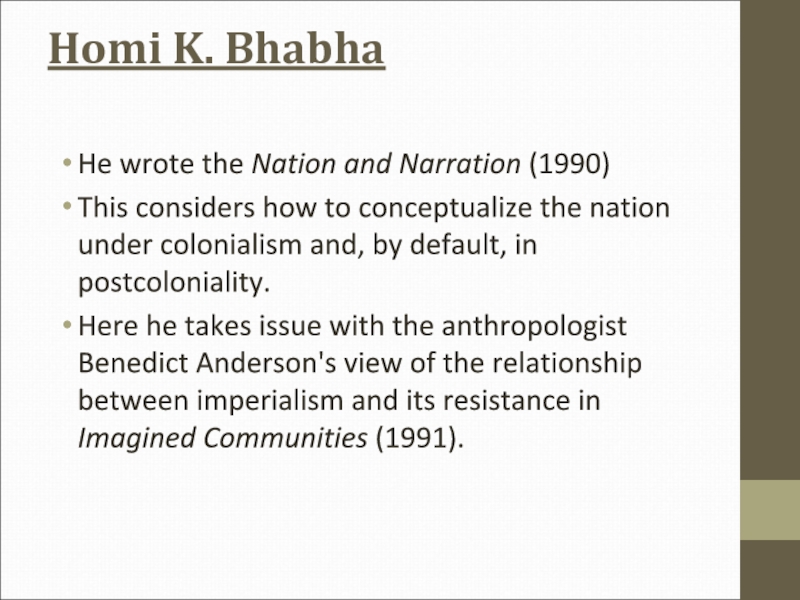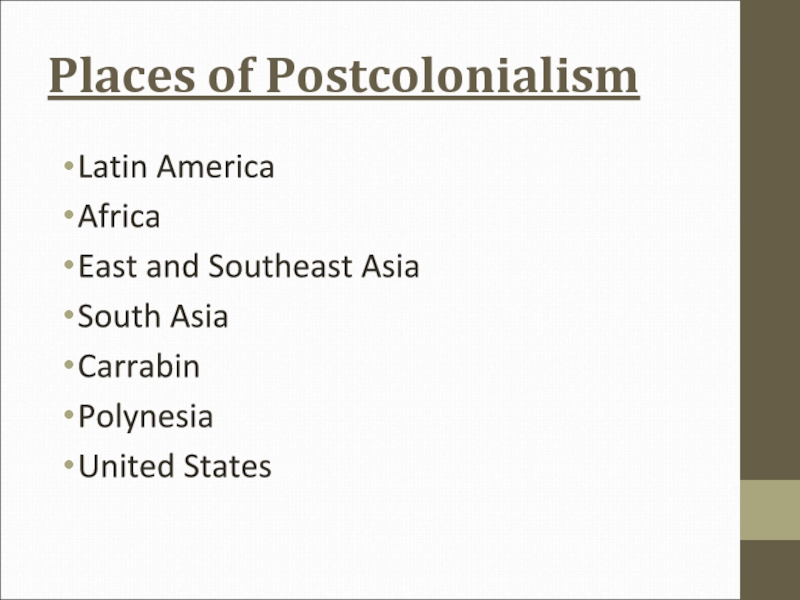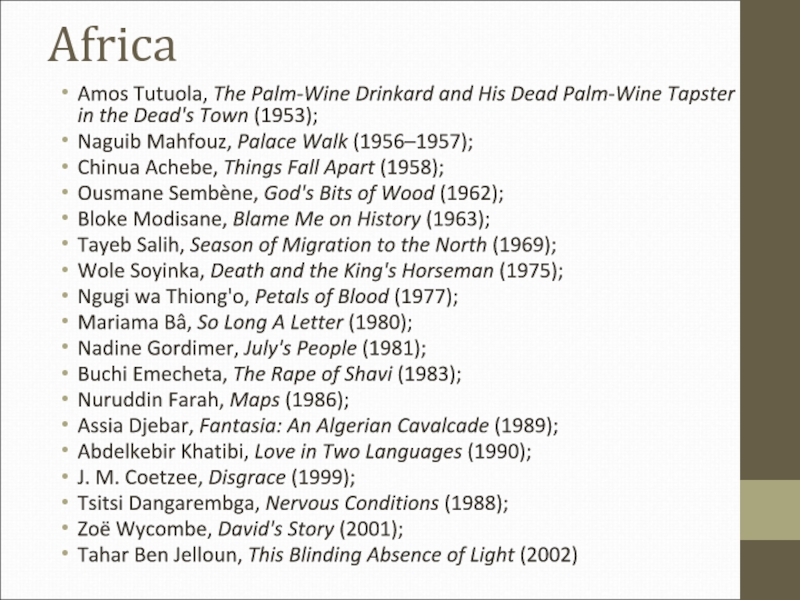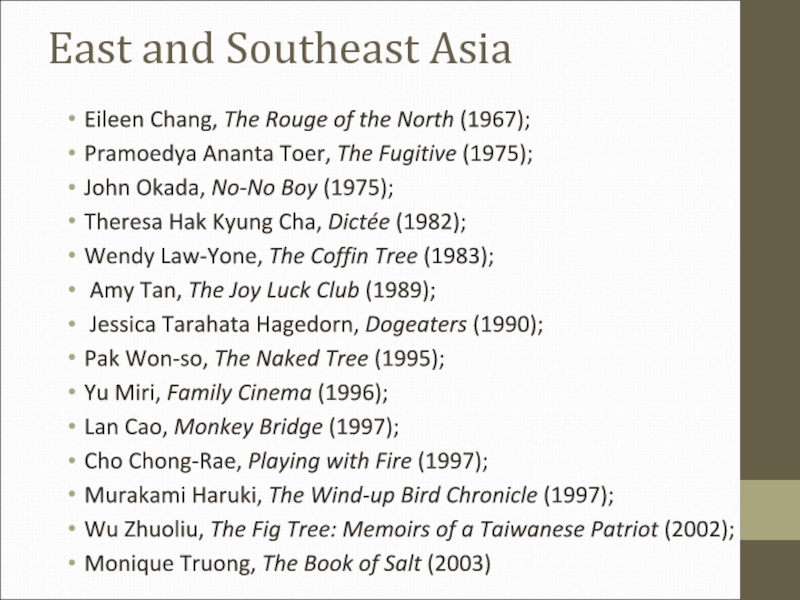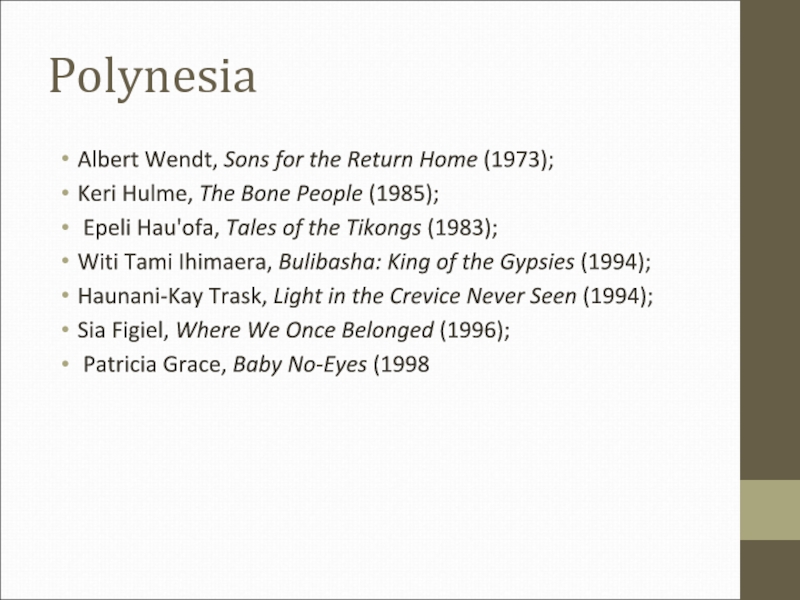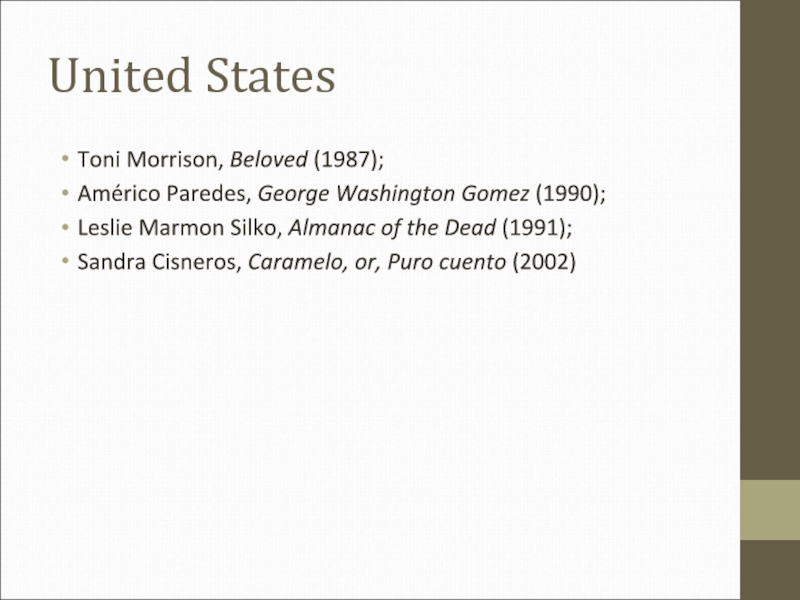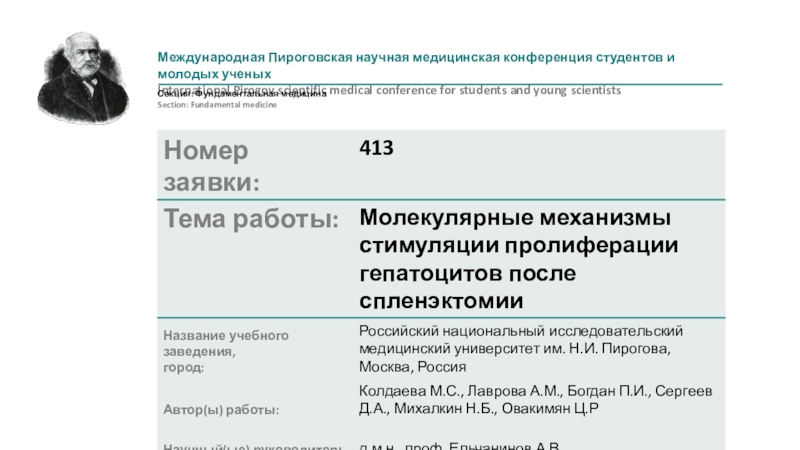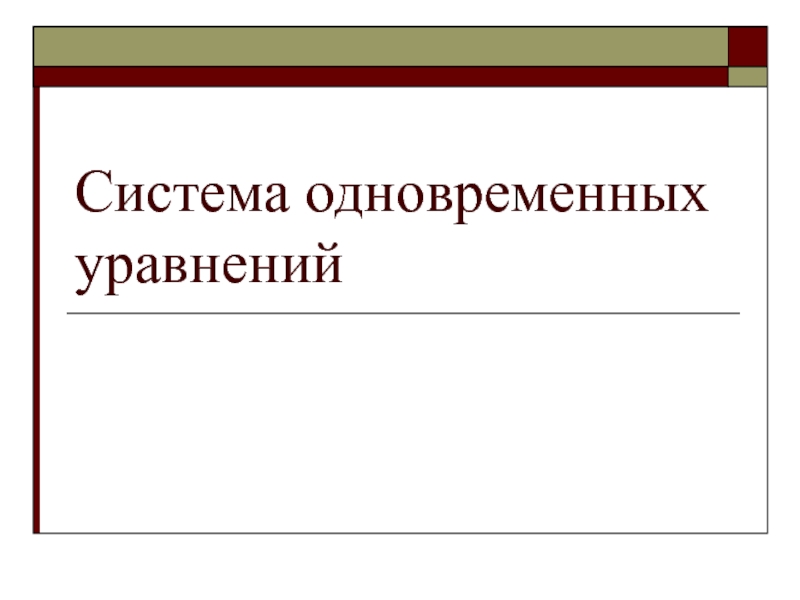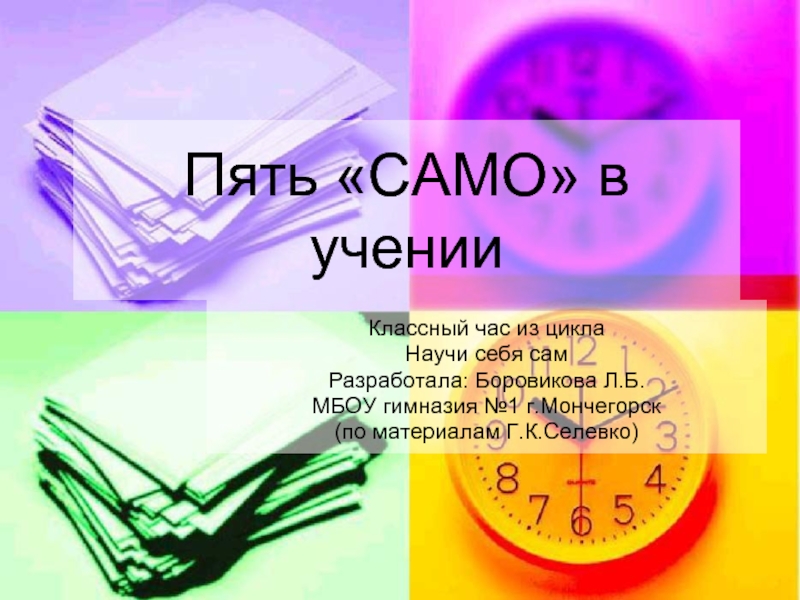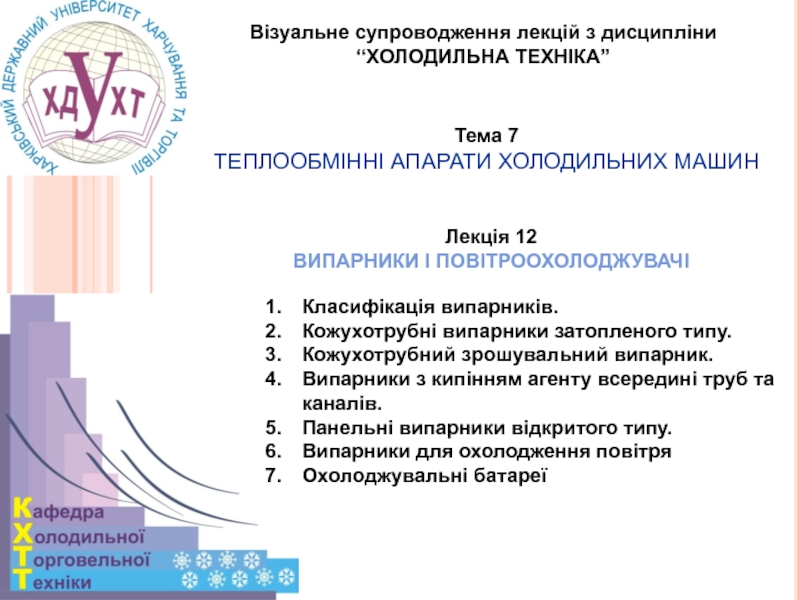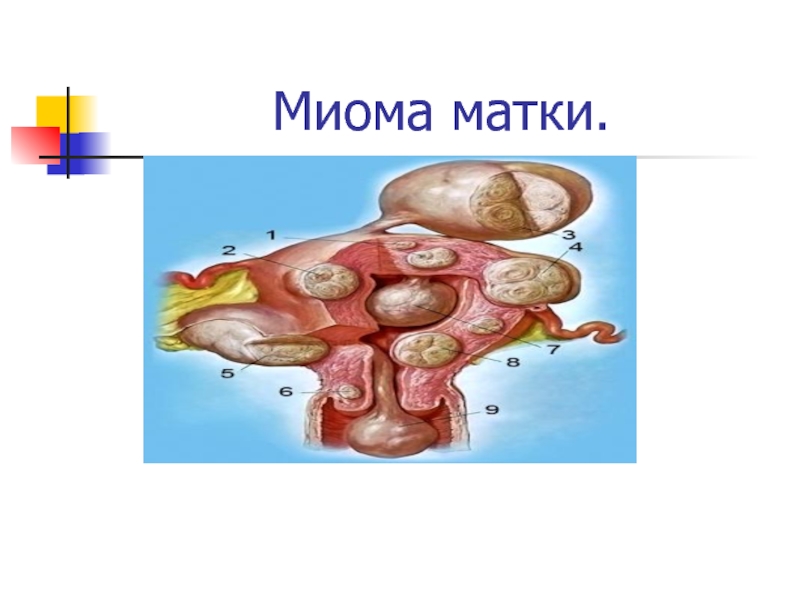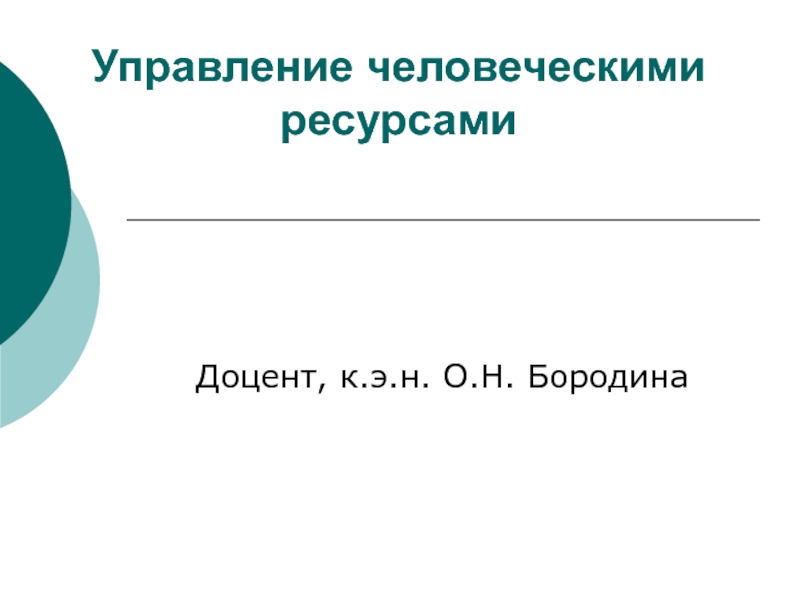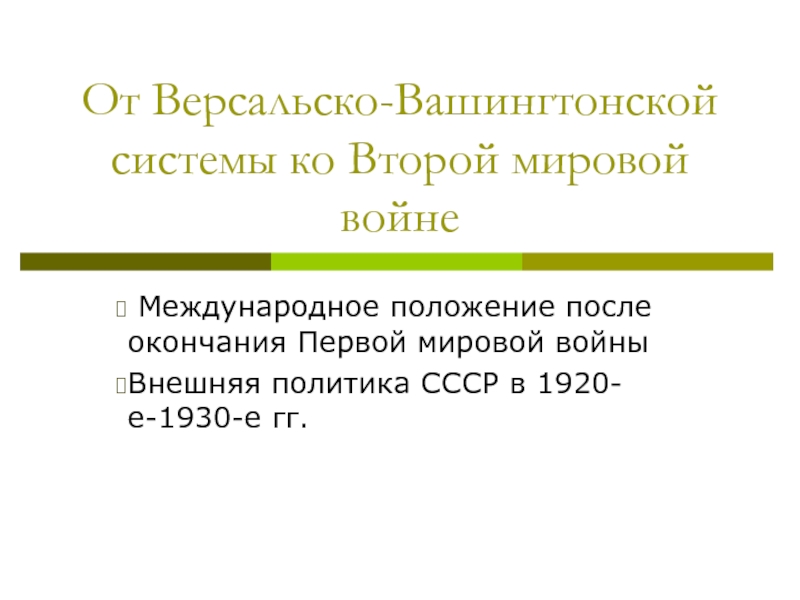Слайд 1The Postcolonial Theory and Literature
Слайд 2PostColonial Theory
Focuses on the reading and writing of literature written
in previously or currently colonized countries. The literature is composed
of colonizing countries that deals with colonization or colonized peoples.
The Postcolonial theory is a term that refers the theoretical and critical observations of former colonies of the Western powers and how they relate to, and interact with, the rest of the world.
Greatly interested in the cultures of the colonizer and the colonized, postcolonial theory seeks to critically investigate what happens when two cultures clash and one of them ideologically fashions itself as superior and assumes dominance and control over the other.
The field of postcolonial studies has itself been hotly contested ever since its rise in the 1970s.
Слайд 3The 3 Pillars of Postcolonial Theory
Edward W. Said
Gayatri Chakravorty
Spivak
Homi K. Bhabha
Слайд 4Edward Said
Probably the most important figure for the rise of
postcolonial studies and theory.
Born in 1935 in Jerusalem and
dies 2003
Palestinian-American scholar, critic, and writer
Said, raised as an Anglican, attended a British school in Cairo then at Princeton and Harvard, he became an academic literary critic.
From 1963 until his death he was a professor of English and comparative literature at Columbia University in New York.
Слайд 5Edward Said continued
He soon became the best-known American advocate for
the Palestinian cause.
His 1978 book Orientalism reevaluated an entire historical
tradition of European-American thought, examining the relation of political power to the representation of the world, and generated an entire field of cultural and postcolonial studies as well as informing the thinking of scholars in every area of cultural, social and historical work.
Слайд 6Edward Said continued
Other significant books include The Question of Palestine
(1979), Covering Islam (1981), The World, the Text and the
Critic (1983), Culture and Imperialism (1993), The Politics of Dispossession (1994), Representations of the Intellectual (1994), Peace and Its Discontents (1995), The End of the Peace Process (2000), Reflections on Exile (2000) and Humanism and Democratic Criticism (2004).
Слайд 7Orientalism
Illustrates Asian and Islamic Cultures during European imperialism and Europe’s
goals of maintaining power and domination of non-Europeans
He argued that
Europe used the Orient and imperialism as a symbol of its strength and superiority.
“Said suggested that Orientalists are treated as others—in this case, Muslims and Asians—and as objects defined not in terms of their own discourses, but solely in terms of standards and definitions imposed on them from outside. Among the influences underlying these definitions was, in Said's view, a long-standing Western concern with presenting Islam as opposed to Christianity.
Слайд 8Gayatri Chakravorty Spivak
Gayatri Chakravorty Spivak was born in 1942
Is thought
of as one of the three co-founders of postcolonial theory.
Her main work on the postcolonial theory was her Critique of Postcolonial Reason: Toward a History of the Vanishing Present (1999)
Her work combines Marxism, feminism, and deconstruction.
Слайд 9Gayatri Chakravorty Spivak
continued
She introduced many to this type of
postcolonial theory when she published three pieces in the 1980s:
"Three Women's Texts and a Critique of Imperialism," "Can the Subaltern Speak?," and "'Draupadi' by Mahasweta Devi."
She also translated the novels of Mahasweta Devi, a fiction-writer in Bengali, which have been influential in establishing the parameters of the literature of postcolonialism; these include Imaginary Maps (1995), Old Women (1999), and Chotti Munda and His Arrow (2002).
In Mahasweta Devi fictional novels, she presents the native in her otherness and singularity.
Слайд 10Homi K. Bhabha
He wrote the Nation and Narration (1990)
This considers
how to conceptualize the nation under colonialism and, by default,
in postcoloniality.
Here he takes issue with the anthropologist Benedict Anderson's view of the relationship between imperialism and its resistance in Imagined Communities (1991).
Слайд 11Places of Postcolonialism
Latin America
Africa
East and Southeast Asia
South Asia
Carrabin
Polynesia
United States
Слайд 12Latin America
Alejo Carpentier, The Lost Steps (1956);
Carlos Fuentes, The
Death of Artemio Cruz (1964);
Julio Cortázar, Hopscotch (1966);
Mario
Vargas Llosa, The Green House (1968);
Gabriel García Márquez, One Hundred Years of Solitude (1970);
Manuel Puig, Betrayed by Rita Hayworth (1971);
Marta Traba, Mothers and Shadows (1983);
Severo Sarduy, Colibri (1984);
Isabel Allende, House of the Spirits (1985);
Silviano Santiago, Stella Manhattan (1985);
Diamela Eltit, The Fourth World (1995);
João Gilberto Noll, Hotel Atlantico (1989);
César Aira, The Hare (1998);
Ricardo Piglia, The Absent City (2000);
Pedro Lemebel, My Tender Matador (2003)
Слайд 13Africa
Amos Tutuola, The Palm-Wine Drinkard and His Dead Palm-Wine Tapster
in the Dead's Town (1953);
Naguib Mahfouz, Palace Walk (1956–1957);
Chinua Achebe, Things Fall Apart (1958);
Ousmane Sembène, God's Bits of Wood (1962);
Bloke Modisane, Blame Me on History (1963);
Tayeb Salih, Season of Migration to the North (1969);
Wole Soyinka, Death and the King's Horseman (1975);
Ngugi wa Thiong'o, Petals of Blood (1977);
Mariama Bâ, So Long A Letter (1980);
Nadine Gordimer, July's People (1981);
Buchi Emecheta, The Rape of Shavi (1983);
Nuruddin Farah, Maps (1986);
Assia Djebar, Fantasia: An Algerian Cavalcade (1989);
Abdelkebir Khatibi, Love in Two Languages (1990);
J. M. Coetzee, Disgrace (1999);
Tsitsi Dangarembga, Nervous Conditions (1988);
Zoë Wycombe, David's Story (2001);
Tahar Ben Jelloun, This Blinding Absence of Light (2002)
Слайд 14East and Southeast Asia
Eileen Chang, The Rouge of the North
(1967);
Pramoedya Ananta Toer, The Fugitive (1975);
John Okada, No-No
Boy (1975);
Theresa Hak Kyung Cha, Dictée (1982);
Wendy Law-Yone, The Coffin Tree (1983);
Amy Tan, The Joy Luck Club (1989);
Jessica Tarahata Hagedorn, Dogeaters (1990);
Pak Won-so, The Naked Tree (1995);
Yu Miri, Family Cinema (1996);
Lan Cao, Monkey Bridge (1997);
Cho Chong-Rae, Playing with Fire (1997);
Murakami Haruki, The Wind-up Bird Chronicle (1997);
Wu Zhuoliu, The Fig Tree: Memoirs of a Taiwanese Patriot (2002);
Monique Truong, The Book of Salt (2003)
Слайд 15South Asia
R. K. Narayan, Swami and Friends (1944)
Kamala Markandaya, Nectar
in a Sieve (1954)
Raja Rao, Serpent and the Rope (1960)
Bharati
Mukherjee, The Tiger's Daughter (1972)
Salman Rushdie, Midnight's Children (1981)
Hanif Kureishi, The Buddha of Suburbia (1990)
Meena Alexander, Fault Lines: A Memoir (1993)
Mahasweta Devi, Imaginary Maps (1994)
Jhumpa Lahiri, Interpreter of Maladies (1999)
Amitav Ghosh, The Glass Palace (2001)
Rohinton Mistry, Family Matters (2001)
Слайд 16Caribbean
George Lamming, In the Castle of My Skin (1953);
V.
S. Naipaul, Mystic Masseur (1959);
Kamau Brathwaite, Rights of Passage
(1967);
Aimé Césaire, Tempest (1986);
Maryse Condé, Heremakhonon (1976);
Wilson Harris, Guyana Quartet (1985);
Derek Walcott, Omeros (1990);
Jamaica Kincaid, Lucy (1990);
Erna Brodber, Louisiana (1994),
Слайд 17Polynesia
Albert Wendt, Sons for the Return Home (1973);
Keri Hulme,
The Bone People (1985);
Epeli Hau'ofa, Tales of the Tikongs
(1983);
Witi Tami Ihimaera, Bulibasha: King of the Gypsies (1994);
Haunani-Kay Trask, Light in the Crevice Never Seen (1994);
Sia Figiel, Where We Once Belonged (1996);
Patricia Grace, Baby No-Eyes (1998
Слайд 18United States
Toni Morrison, Beloved (1987);
Américo Paredes, George Washington Gomez (1990);
Leslie
Marmon Silko, Almanac of the Dead (1991);
Sandra Cisneros, Caramelo,
or, Puro cuento (2002)
